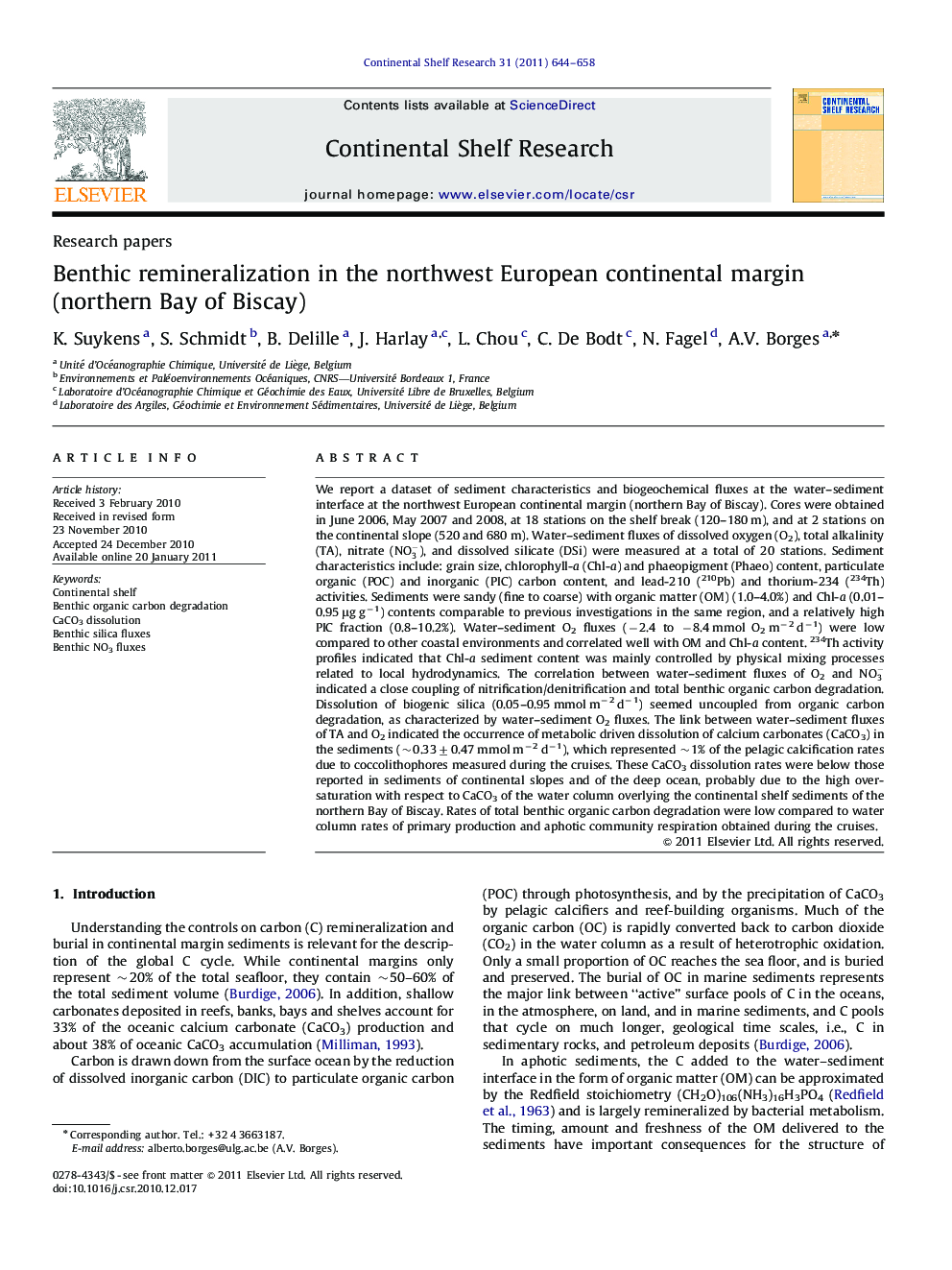| Article ID | Journal | Published Year | Pages | File Type |
|---|---|---|---|---|
| 4532668 | Continental Shelf Research | 2011 | 15 Pages |
We report a dataset of sediment characteristics and biogeochemical fluxes at the water–sediment interface at the northwest European continental margin (northern Bay of Biscay). Cores were obtained in June 2006, May 2007 and 2008, at 18 stations on the shelf break (120–180 m), and at 2 stations on the continental slope (520 and 680 m). Water–sediment fluxes of dissolved oxygen (O2), total alkalinity (TA), nitrate (NO3−), and dissolved silicate (DSi) were measured at a total of 20 stations. Sediment characteristics include: grain size, chlorophyll-a (Chl-a) and phaeopigment (Phaeo) content, particulate organic (POC) and inorganic (PIC) carbon content, and lead-210 (210Pb) and thorium-234 (234Th) activities. Sediments were sandy (fine to coarse) with organic matter (OM) (1.0–4.0%) and Chl-a (0.01–0.95 μg g−1) contents comparable to previous investigations in the same region, and a relatively high PIC fraction (0.8–10.2%). Water–sediment O2 fluxes (−2.4 to −8.4 mmol O2 m−2 d−1) were low compared to other coastal environments and correlated well with OM and Chl-a content. 234Th activity profiles indicated that Chl-a sediment content was mainly controlled by physical mixing processes related to local hydrodynamics. The correlation between water–sediment fluxes of O2 and NO3− indicated a close coupling of nitrification/denitrification and total benthic organic carbon degradation. Dissolution of biogenic silica (0.05–0.95 mmol m−2 d−1) seemed uncoupled from organic carbon degradation, as characterized by water–sediment O2 fluxes. The link between water–sediment fluxes of TA and O2 indicated the occurrence of metabolic driven dissolution of calcium carbonates (CaCO3) in the sediments (∼0.33±0.47 mmol m−2 d−1), which represented ∼1% of the pelagic calcification rates due to coccolithophores measured during the cruises. These CaCO3 dissolution rates were below those reported in sediments of continental slopes and of the deep ocean, probably due to the high over-saturation with respect to CaCO3 of the water column overlying the continental shelf sediments of the northern Bay of Biscay. Rates of total benthic organic carbon degradation were low compared to water column rates of primary production and aphotic community respiration obtained during the cruises.
Research highlights► Dataset of sediment characteristics at the northwest European continental margin. ► Dataset of water-sediment biogeochemical fluxes at the northwest European continental margin. ► Low benthic respiration rates. ► Low benthic dissolution of calcium carbonates (CaCO3).
